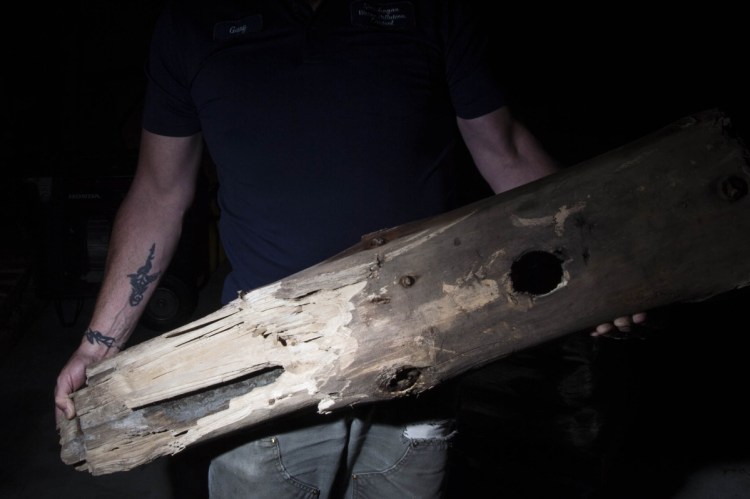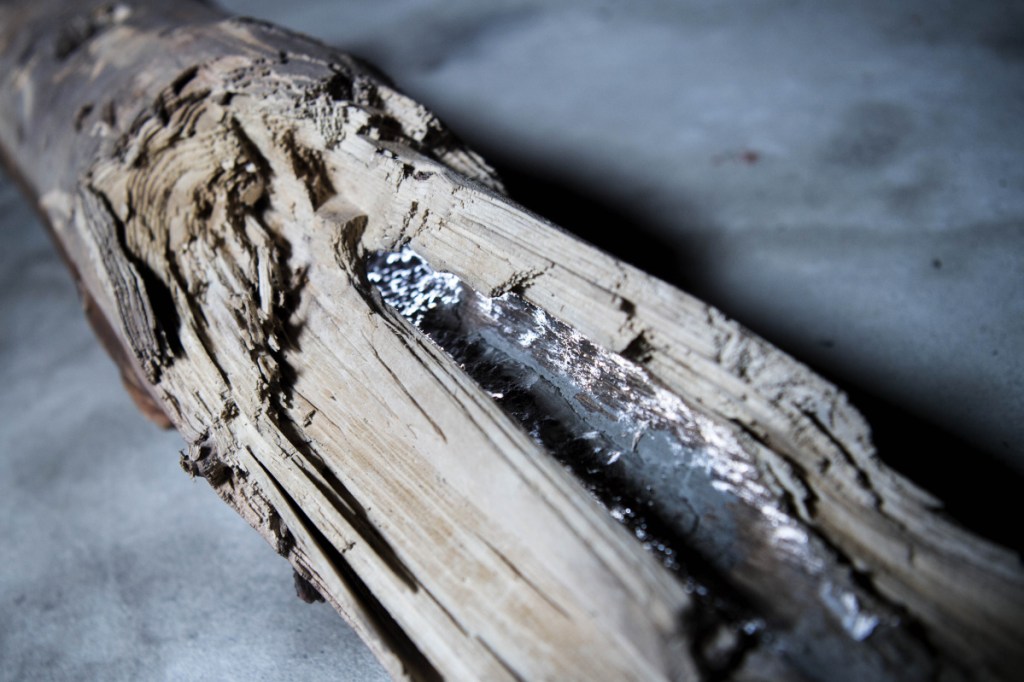SKOWHEGAN — Workers excavating North Avenue for the town’s sewer separation project made quite a discovery recently: a section of wooden water main that probably was installed before the Civil War.
Brent Dickey, superintendent of the town’s pollution control plant, who is overseeing the project, said the 4-foot-long section of wooden pipe is about 8 inches in diameter and has a 2-inch hole that fed the water to a pre-Civil War house or barn on North Avenue near Leavitt Street.
Gary Cowan, an operator at the treatment plant, and Dickey both said the water line likely dates to the 1850s.
“We believe that’s a service tap for either a home or business,” he said pointing to the 2-inch hole. “This would have been the water main coming down the street and it would have had services off to the farms and houses.”
Dickey and Cowan said it is unlikely that homes had indoor plumbing or running water in those days, but having water handy was a convenient addition to any kitchen, milk room, field or stable.
“It could have gone to a hand pump or something to an individual home, or maybe to a barn,” Cowan said. “My grandparents had an old barn that just had water that ran into the horse trough, and it was just a constant feed of water. It never shut off.”
Dickey said the water line would have been drilled using an auger or a hand drill. Pipe sections were put together with the tapered end of one length fitted into another section, or with joining nipples, where the moisture from the water would have swelled the wood for a tight fit.
“They’re out there, all over the country,” Dickey said of wooden water mains from that era.
He said the water would have been gravity-fed from natural springs on the upper part of North Avenue, where there is an aquifer and wet, sandy soil. The pipe appears to have been made of hemlock. It was found 7 feet down in the ground below North Avenue — to keep it from freezing.
Water mains first were made of wood, then lead and finally, in the 1880s or so, cast iron. The Skowhegan Water Co. was incorporated in 1887, taking the place of several small aqueduct companies that had been established decades earlier, according to material provided by Dickey.
The first nonwooden water pipes in New England were installed in Portland in 1812, followed by Montpelier, Vermont, in 1820, and in both instances the pipes were lead, according to the Tata & Howard water service company. Other cities followed suit throughout the 19th century, utilizing wrought iron, cast iron and lead pipe.
In the 1950s, according to the water service company’s website, ductile iron piping was introduced and boasted the longevity of cast iron with the addition of increased strength, flexibility and safety. It became widely used in the 1970s and it is still the material of choice throughout New England today.
Dickey said he will confer with Town Manager Christina Almand to see if the pipe can be displayed somewhere for public viewing.
Doug Harlow — 612-2367
Twitter:@Doug_Harlow
Send questions/comments to the editors.





Comments are no longer available on this story